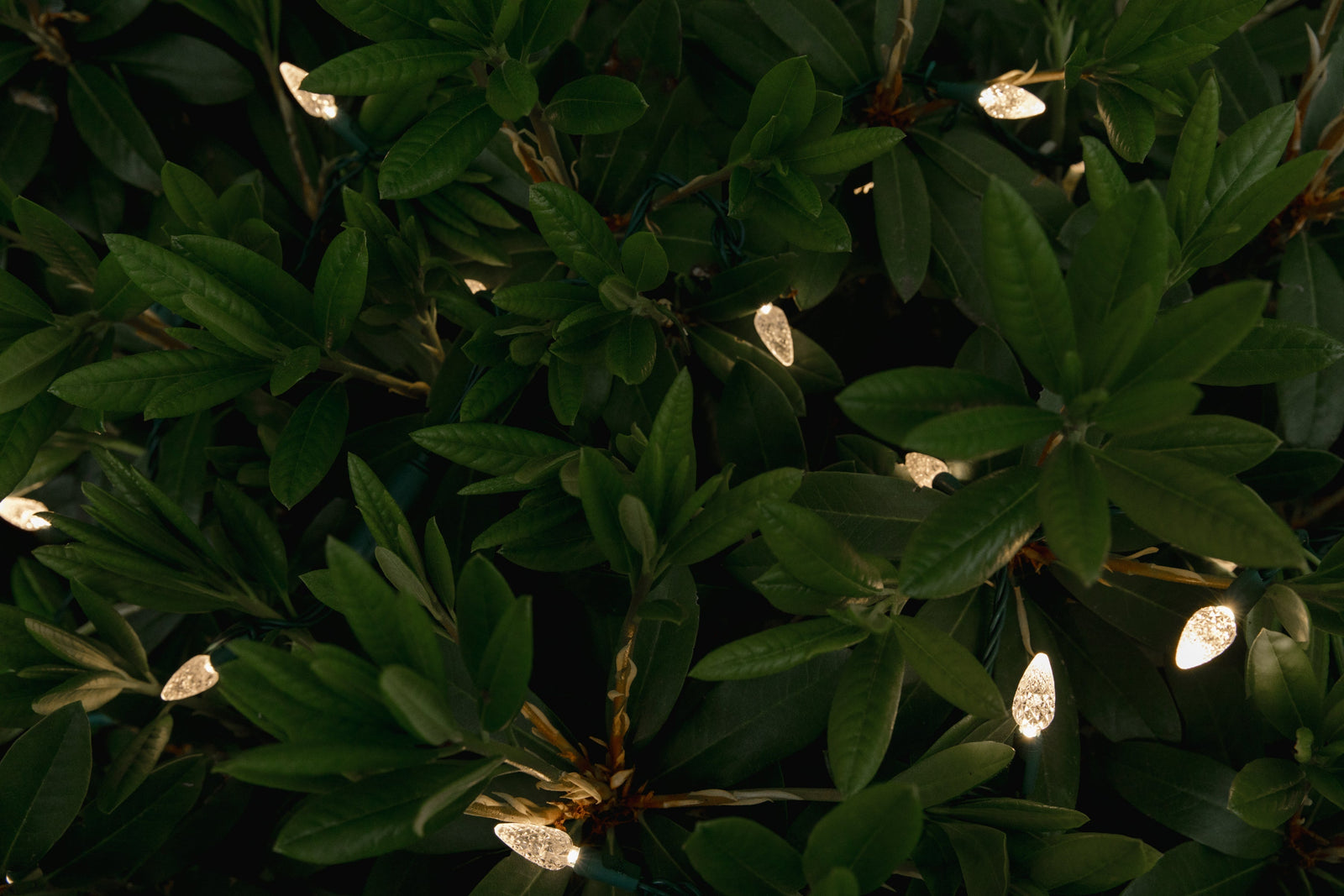The Question: Can string lights really last 100,000 hours? We demystify the LED Christmas Light Rated Lifespan.
LED Christmas lights are unquestionably efficient and last longer than their incandescent alternatives. However, not all LEDs are made equally. Manufacturers and suppliers of LED Christmas lights boast anywhere from 10,000 hour to 100,000 hour lifespans that with only season usage equates to 18 to 185 years! If they are on for 24 hours a day for 3 months per year, they will supposedly last 5 - 46 years, at least on paper!
Can String Lights Last 100,000 Hours?
Those claims of 100,000 hours aren’t wrong, but they aren’t right either. Rated life hours have lost a bit of their meaning because of the different type of technology between LED and previous lighting technology. For incandescent and halogen bulbs, a rated life of 1,000 to 2,000 hours, respectively, is quite common. At that point, the filament may break and the light simply goes out. However, over those thousands of hours that the light functions, light output is declining. The light output declines very slightly, though, so it is hardly noticeable unless the lamp lasts much longer than expected, which is unlikely.

LEDs vs Halogen Bulbs - What You Need to Know
In LEDs, however, there is no filament that will break suddenly and cause a failure. LEDs are “solid state”, meaning they can output light for much longer than incandescents, even up to 75,000 or 100,000 hours. However, the amount of light an LED emits declines over time just like with incandescent and halogens. This can become more noticeable because the lives of LEDs last much longer.
“The hype touting LEDs as having a useful life of 100,000 hr is incorrect” says Philips Application Engineer Pat Goodman at Philips Lumileds Lighting Co. in San Jose, Calif.
Goodman thinks he knows where the 100,000-hr figure originated. “A Hewlett- Packard engineer in the 1980s determined that a 5mm LED lamp would electrically still look like a diode at 100,000 hours,” says Goodman. “It might put out little useful light but it would have the same forward and reverse voltages, and so on. He published that information without qualifying what the 100,000-hr lifetime meant. He was right, but the question is whether the diode would be useful as a light.”
L70 - The New Standard for Measuring LED Lifespan
The industry has had to establish a new type of rated life for LEDs, referred to as L70. This is the estimated time it takes for the LED to reach 70% of its original light output. A light can decline up to 30% over its lifetime without a noticeable difference, but as it declines more than that, the human eye will notice it going dim. This is the point that is marked as the ‘end of life’ for LED bulbs. It is not simply when the technology will fail, which may be much longer than the rated life.
What to Look Out for When Buying LED Lights
If LED Christmas light suppliers are advertising 100,000 hour lifespans without more information, it’s a good idea to question what exactly they are measuring. Are they measuring the L70 rating, or simply the point in time the LED can be expected to completely fail. Most people don’t want LED Christmas lights that are 30% - 99% dim. This further complicates things when you go to replace a string that is 100% out. That new string will be noticeably brighter than the one next to it. Notice in this photo that there's a brand new strand at the base of the tree, mixed with older strands.
Component Life Makes a Difference Too!
An important and often overlooked consideration is the component life of LED bulbs. LEDs are basically little computers and the diode itself may still function fine while the heat sink or other components fails. However, the cheaper the components, the more likely the lamp will fail earlier or go dim faster. This is a significant cause of:
- early failure for some LEDs
- lower cost of some LEDs compared to ones rated for 25,000 to 50,000 hour

Why We Only Use High-Quality LED Components at Big Star Lights
At Big Star Lights, our lighting products are manufactured in China, like 99% of the world’s LED lights. However, components such as inside our 5mm Mini-Light strings or C6 Strawberry strings are made in Japan, a country renowned for their high quality LED components. Furthermore, the Polypropylene plastic used to cover the copper wire and protect the lights from harmful elements like water and UV is sourced from the USA. It doesn’t harden as quickly as cheaper plastics, which prevents components from overheating, shorting, creating more resistance, and allows them to perform exceptionally well for a much longer period of time.

Try our lights for yourself. Sample kits are available for you to touch, feel, and plug in our products. The quality is not just evident now, but it will certainly be in 3, 5, and even 10 years from now. We understand the labour costs associated with maintaining lights and we’ve made it an uncompromised priority to ensure our customers only install the best Christmas lights available on the market.

